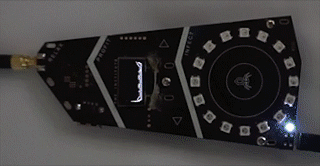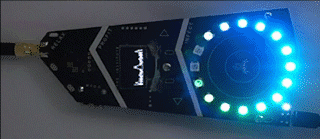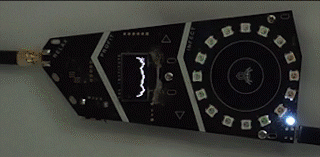
Electronics are generally designed for a specific purpose, not bred from a series of “DNA” exchanges from compatible boards. But these “blinky badges,” made for Burning Man by Andrew “Bunnie” Huang, are designed to do just that.
Huang wanted his badges, designed to keep wearers visible and safe at Burning Man, to be unique to each user. However, messing with knobs and buttons wouldn’t be a very social experience, so he instead designed them to use a peer-to-peer radio protocol to allow them to share their light pattern makeups.
When two badges “mate,” they exchange their patterns with each other, mix the sequences, and then both badges become something new, literally transforming into the “offspring.”
As in biological situations, some LED traits are recessive, while others are dominant. as Huang puts it, “It’s important when thinking about biological genes to remember that they aren’t like lines of computer code. Rather, they are like the knobs on an analog synth.” You can see some examples of what is possible below:
Huang built these badges as a test of the open source Orchard board, which is a radio-connected computing solution. Hardware-wise, these boards fit in quite well with what he was trying to accomplish at Burning Man. As for production, he says, “I was teaching in Shenzhen to a group of MIT Media Lab students about supply chains. We used the Orchard reference design as the teaching platform for the course; the Burning Man badge is a derivative of that.”
To build this for his theme camp, “The Institute,” Huang sold badges to 85 people at $69 each, but built a total of 105 to make sure he could fulfill the order. The extras were given away. It seems these badges were a great success. As cool as they look in GIF form, I’m sure they are even cooler in person. Maybe we’ll see more from the Orchard platform in the future!
ADVERTISEMENT












